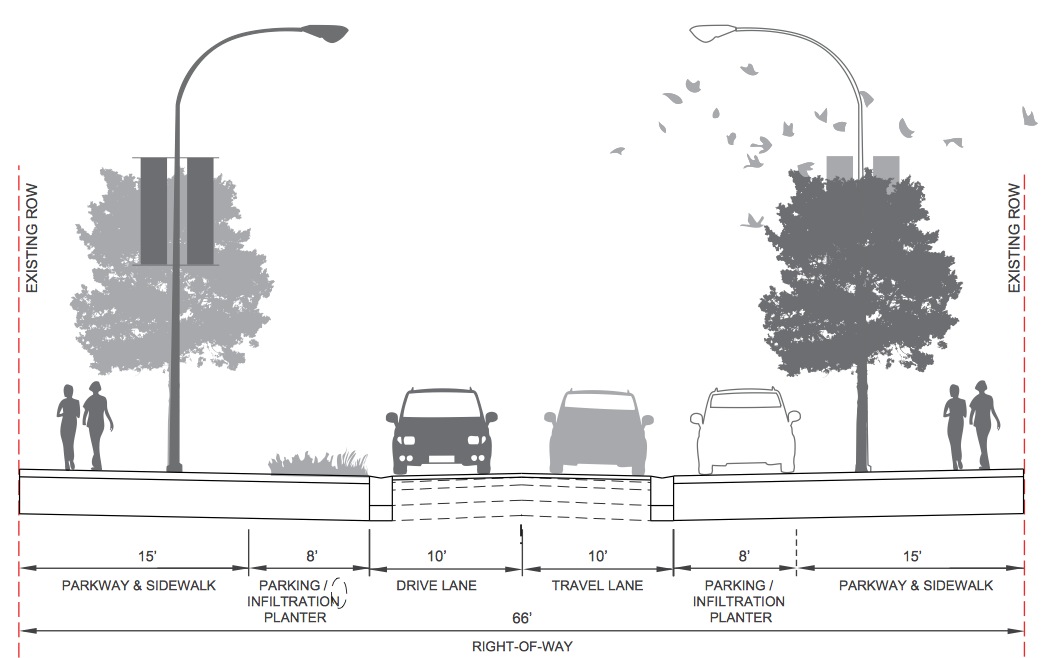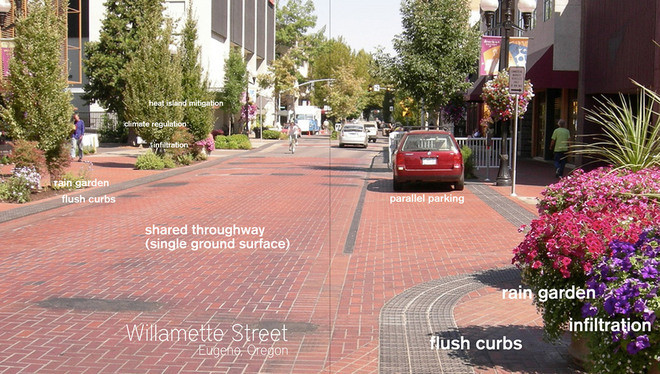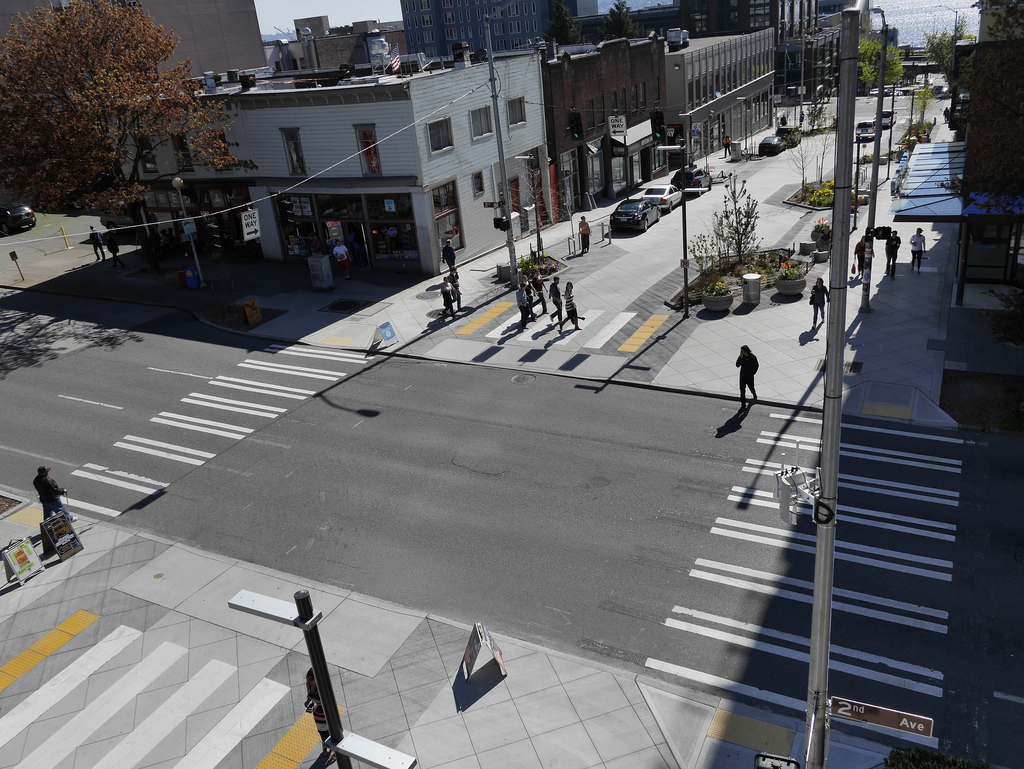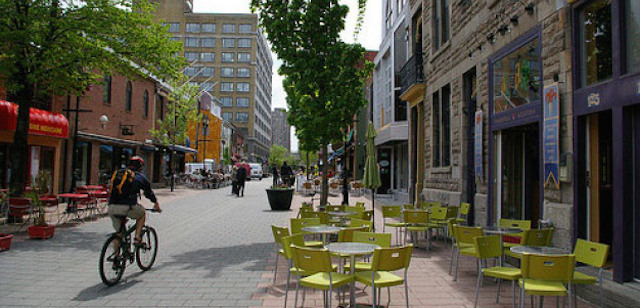Imagine a street where pedestrians, bikes and cars peacefully coexist without any posted regulations or official roadway technology. Is this some autonomous car utopia of the near-future? Nope. This is a globally proven design for safer streets, which is finally making its way to the US.
The idea is called “shared space” and it has been popularised by a Dutch concept named woonerf or living street. There are about 6000 official woonerf in the Netherlands, most often used in residential areas where households can use the streets as recreational space when cars aren’t around. This kind of street has been embraced by many countries in Europe, Asia and South America as a way to make cities healthier and help convert some of the real estate usually devoted to cars into multi-modal walkable, bikeable, driveable zones that all can use.

A cross-section of the Argyle Streetscape Project in Chicago.
And it’s finally catching on. Co.Exist looks at one such proposal for Chicago that will break ground early next year. The Argyle Streetscape Project will transform four blocks of a typical Chicago street into a hybrid thoroughfare open to cars, bikes and walkers without prioritising any single mode. There will be no lanes, no signals and no signage (although there will be stop signs). Different paving than the typical asphalt — kind of like extending the footpath across the entire roadway — will be placed universally across the entire roadway, signify to all users that this is a different kind of street. There will be no kerbs, but trees, planters and bollards will help to cordon off specific pedestrian seating areas. The improvements are low-cost and can dramatically improve the quality of life for residents.

A woonerf in Eugene, Oregon, showing features like the alternative paving and lack of curbs via Buffalo Rising.
While this may seem like anarchy, or an accident waiting to happen, the concept of “shared space” has actually been proven to yield safer neighbourhoods. First of all, the radical design of the street itself gives cues to all its users to slow down and pay attention. While you might think of other “traffic calming” techniques like speed bumps and roundabouts, there are also more subtle infrastructural improvements that can be made. A woonerf will add narrower lanes, landscaping in the medians, and that unique paving texture to signify to drivers that this street is different. While some places post signs warning drivers to share the road, many cities have found they don’t need to.

The streetscape plan for the Bell Street woonerf in Seattle, showing how pedestrians, bikes and vehicles share the space. Picture: Nate Cormier, SvR Design Company.
The other big trick is that removal of all the typical information that road surfaces usually provide (although when crossing larger streets, crosswalks are still needed). Instead of wide lanes focusing on maximising the volume of cars that shoo pedestrians and bikes to the fringes, no one mode is given specific real estate on the street itself. This requires each mode to be highly aware of the others. Like the unspoken conversation that drivers have when they come to a stop sign, the shared space allows users to make eye contact and navigate the street in the safest and most respectful way for all.
While this design won’t work on every block in America — namely in places where the volume of cars is very high — there’s a very good case for converting many smaller and more residential streets to this model. Next month New York City will reduce its speed limit citywide to 40km/h in an effort to eradicate traffic fatalities, another European idea that’s finally catching on here in the US. When paired with an overall reduction in speed, these incremental changes to the street and footpath will almost certainly save lives as they encourage all to slow down and share the road. [Co.Exist]
Picture: A woonerf in Madison, Wisconsin. Picture: Urban Cincy
